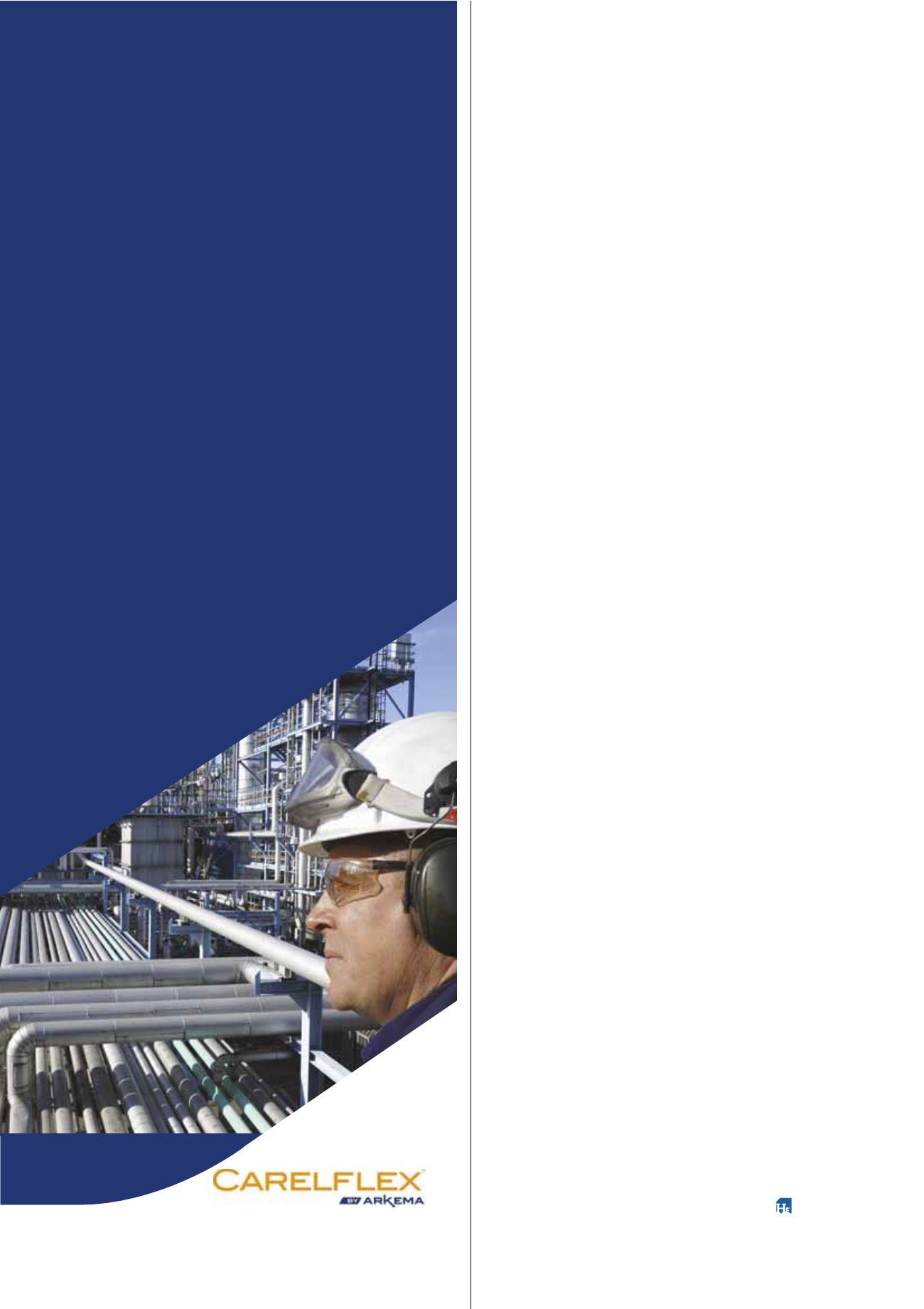
A global leader in thiochemistry, Arkema
manufactures one of the most efficient
activating agents, dimethyl disulfide (DMDS),
in the U.S., Europe, and Asia.
Carelflex
®
sulfiding service offers:
•
Sulfiding procedures, technical guidance,
training, and 24/7 coverage during activation
•
Patented, low-odor DMDS Evolution
®
2
•
Dedicated high capacity pressure equipment
•
High pressure pumping
•
H
2
S analysis with remote data access
during activation
•
Arkema amines available for passivation of
hydrocracking catalysts
Our global logistics network and experienced
Carelflex
®
sulfiding service team stand ready
for your next activation.
For Customer Service,
call 800.628.4453
dmds-evolution.comCarelflex and Evolution are registered trademarks of Arkema.
© 2017 Arkema Inc. All rights reserved.
ARKEMA’S
CARELFLEX
®
SULFIDING
SERVICE HAS
YOU COVERED
failure of the elastomeric sealant used in the
joints between sections.
Based on the outcome of a prior inspection,
the affected lines were identified by system
number and reviewed by a process group
consisting of Bilfinger experts and client
representatives to establish the requirements
for replacement insulation. Once the scope was
agreed with the client, marked up piping and
instrumentation diagrams and isometrics were
produced, along with a schedule of works for
replacing the sections in question.
Where replacements were needed, the
mineral wool was replaced with foam glass. This
was clad in banding tape sealed with advanced
Terostat PC vapour-barrier mastic, a long-life
sealant proven to deliver better resistance than
elastomeric options. The insulation was applied
in the form of prefabricated shells, which are
supplied tailor-made, allowing fast installation
on site and reduced installation costs.
The scale of the project, in which hundreds
of metres of insulation needed to be replaced,
meant that the works would take place over a
period of several months. Throughout delivery,
the project team delivered a monthly report,
providing information on productivity;
tool-time; costs; man allocation hours; work
pack tracker; project highs and lows; health,
safety, environment and quality (HSEQ) CUI
statistics; and linear distance re-insulated.
Ageing infrastructure
CUI is critical, especially where ageing
infrastructure is involved. The financial burden
involved in carrying out inspections can be
significant, so the process of developing
innovations to make it more efficient is vital in
decreasing the temptation to push back or skip
this essential safety monitoring process.
Conclusion
There is a tendency for there to be a disjoin
between ways of working on and offshore. A
service provider that works across both areas
can observe the differences in approach and
the effect that it has on the quality and cost
effectiveness of maintenance programmes.
There is an argument that onshore oil, gas and
petrochemicals facilities are some way behind
their offshore counterparts in terms of the way
they are tackling CUI, and it is important for
operators to look carefully at their approach so
that the best outcomes at the best value are
ensured.
Failure to manage CUI can, at best, lead to
expensive and time consuming maintenance
operations and, at worst, pose a major threat to
the safety of facilities and personnel – it is not
an area operators can afford to overlook.








